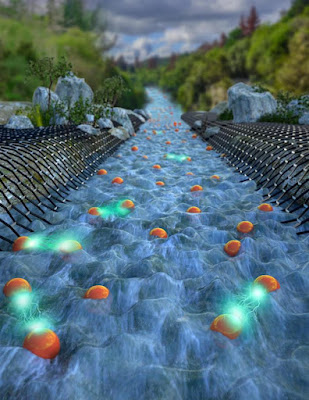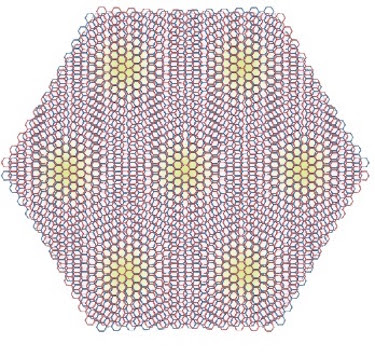Researchers have synthesized sheets of gold that are one atom thick. Credit: imaginima/Getty
Topics: Graphene, Materials Science, Nanoengineering, Nanomaterials, Solid-State Physics
It is the world’s thinnest gold leaf: a gossamer sheet of gold just one atom thick. Researchers have synthesized1 the long-sought material, known as goldene, which is expected to capture light in ways that could be useful in applications such as sensing and catalysis.
Goldene is a gilded cousin of graphene, the iconic atom-thin material made of carbon that was discovered in 2004. Since then, scientists have identified hundreds more of these 2D materials. But it has been particularly difficult to produce 2D sheets of metals, because their atoms have always tended to cluster together to make nanoparticles instead.
Researchers have previously reported single-atom-thick layers of tin2 and lead3 stuck to various substances, and they have produced gold sheets sandwiched between other materials. But “we submit that goldene is the first free-standing 2D metal, to the best of our knowledge”, says materials scientist Lars Hultman at Linköping University in Sweden, who is part of the team behind the new research. Crucially, the simple chemical method used to make goldene should be amenable to larger-scale production, the researchers reported in Nature Synthesis on 16 April1.
“I’m very excited about it,” says Stephanie Reich, a solid-state physicist and materials scientist at the Free University of Berlin, who was not involved in the work. “People have been thinking for quite some time how to take traditional metals and make them into really well-ordered 2D monolayers.”
In 2022, researchers at New York University Abu Dhabi (NYUAD) said that they had produced goldene, but the Linköping team contends that the prior material probably contained multiple atomic layers, on the basis of the electron microscopy images and other data that were published in ACS Applied Materials and Interfaces4. Reich agrees that the 2022 study failed to prove that the material was singler-layer goldene. The principal authors of the NYUAD study did not respond to Nature’s questions about their work.
Meet ‘goldene’: this gilded cousin of graphene is also one atom thick, Mark Peplow, Nature


